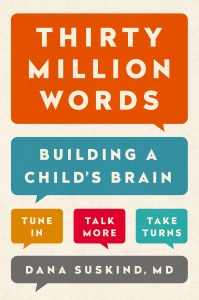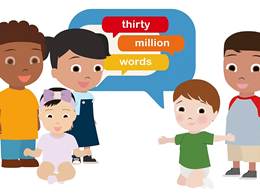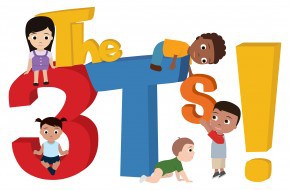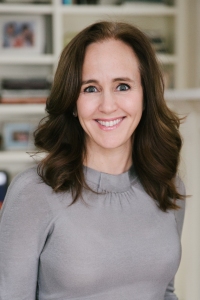By Leslie Lindsay
I am in absolute awe of this amazing book on reading with your children, aptly titled, BOOK SMART: How to Develop and Support Successful, Motivated Readers.
Think back to your own childhood: do you have a special memory with a caregiver and a book? Perhaps you curled up into a grandparent’s lap with a dog-eared copy of nursery rhymes. Maybe you escaped into a popular series as a grade-schooler. Do you recall *your* favorite childhood book?
BOOK SMART will touch on nostalgia while presenting a fabulous array of research in parent-friendly terms, while offering ideas for increasing the love of literature at home, being tech-savvy, and so much more. I am honored to have Drs. Anne Cunningham and Jamie Zibulsky with us to tell us more.
Leslie Lindsay: Welcome and thank you for being with us today, Anne and Jamie! I understand you two are passionate readers, have been for most of your lives. I really resonated with Jamie’s story earlier about how she and her father would cozy up with a book—and Anne’s family thrived on a print-rich environment with a bevy of magazines, books, and newspapers at her disposal. What is it about reading as a child that develops passionate, life-long readers?
Dr. Jamie Zibulsky: That’s a great question, and one that I can’t help but answer in multiple ways. From a research perspective, there are studies that have shown that factors like a caregiver’s motivation to read or their knowledge of children’s books is a good predictor of a child’s future reading success. It makes sense that this is the case because we know that children imitate behaviors they see important people in their lives engaging in, and then eventually internalize the values associated with those behaviors.
I think it’s also important to answer this question from a more personal perspective too, to give an example of what these findings mean for any one child. When I was a kid, I remember how wonderful it felt to get time alone with one of my parents and how grown-up it felt to pick out a book to share with them. Getting a chance to bond with my parents, who both were readers themselves, was one of the initial reasons that I became an enthusiastic reader. However, even though being able to spend time with adults I loved and getting attention for liking books helped me get started on the path to becoming a lifelong reader, these extrinsic rewards eventually became less important than reading for its own sake. I remember how much I loved hearing about the life of Laura Ingalls Wilder and trying to picture what I would have done if I lived during that time period – her books gave me a chance to learn about a time and place that was new to me, but also normalized some of the feelings and experiences I had growing up (by sharing stories about sibling rivalry, for example).
To recap, what we know is that having good reading experiences with a caregiver early on in life makes it more likely that a child will both develop strong skills and also develop enthusiasm for reading. This sets up a feedback loop where kids with better reading skills, more motivation to read, or who spend more time reading end up likely to have all three of these attributes as they get older.
L.L.: I love how BOOK SMART has so many wonderful graphics—charts, especially—busy caregivers can quickly glance, find a literacy activity, and implement it. Can you expand on this feature of the book?
 Dr. Jamie Zibulsky: We’re so glad that the graphics seemed helpful to you! We added this feature for just the reason you mention – we know thatcaregivers of young children are busy and wanted to craft a book that could be useful to a mom who was trying to strengthen shared reading time at home while also working, planning meals for a family of five, or juggling any of the other challenges that come along with parenting. We wanted to make sure that the strategies we talk about in Book Smart were easy to use and that someone could read a chapter and immediately have an idea of how to put the ideas they read about into practice. So, each chapter ends with a list of activities appropriate for kids of a variety of ages that are described briefly. Our hope is that it is the kind of list that motivates caregivers to try a new literacy activity out in the car or during a meal the day after they read about it, because one of the key ideas that we are trying to convey throughout the book is that very simple activities can lead to powerful changes for kids.
Dr. Jamie Zibulsky: We’re so glad that the graphics seemed helpful to you! We added this feature for just the reason you mention – we know thatcaregivers of young children are busy and wanted to craft a book that could be useful to a mom who was trying to strengthen shared reading time at home while also working, planning meals for a family of five, or juggling any of the other challenges that come along with parenting. We wanted to make sure that the strategies we talk about in Book Smart were easy to use and that someone could read a chapter and immediately have an idea of how to put the ideas they read about into practice. So, each chapter ends with a list of activities appropriate for kids of a variety of ages that are described briefly. Our hope is that it is the kind of list that motivates caregivers to try a new literacy activity out in the car or during a meal the day after they read about it, because one of the key ideas that we are trying to convey throughout the book is that very simple activities can lead to powerful changes for kids.
L.L.: Let’s talk about technology a bit. There’s plenty of opportunity to *not* read books, sadly. How can caregivers and children still work in the iPad/tablet, Kindle, and other electronic devices, but gain valuable book skills?
Dr. Jamie Zibulsky: You’re right; there are so many other activities that compete with reading time these days. And it becomes harder and harder to limit young children’s exposure to technology as families begin to own multiple smart phones and tablets. The rule of thumb we suggest that hopefully makes sense to most families, regardless of what their philosophy is on technology, is that tech tools should *supplement* rather than *replace* reading time. What that means to me is that technology can’t substitute for a caregiver – kids need that time sitting with someone, getting cuddles and talking about the pictures in a book together, in order to become a successful, motivated reader. But if there is a time of day when it would be difficult for a caregiver to read with a child or a time when a child already protests about reading independently, that might be a time of day when it’s appropriate for that child to play a rhyming game online or read a magazine on the Kindle. Many kids do find reading online or downloading a new app exciting, so harnessing that enthusiasm is a way that we can help encourage reading during times when a child might have previously been using technology for a different purpose.
L.L.: One thing I really liked in the book is the idea of specific praise versus this idea of ‘blanketed praise.’ That is, not telling your child she is smart (even if she is), but instead offering specific phrase, “Great job thinking of another word for cold.” Why is this so important?
Dr. Anne Cunningham: When global praise is used, and children are told in general terms that they are wonderful, or smart, or a good reader it sets them up for disappointment because no one is always smart in every situation or a good reader for all kinds of text. That means at some point, even very skilled children will think something like, “Hey, Mom said I was a great reader, but I had so much trouble understanding the story today. I guess I’m not a good reader anymore now that I’m in fourth grade.” However, when a parent or caretaker uses specific praise such as ‘’Even though that story was difficult to understand, you kept at it and asked questions about the plot,” to praise the persistence and specific problem solving skills that their child displayed, their child is better prepared to tackle difficult or novel problems or issues in the future. We want to give kids praise that they can apply to future situations, which generally means focusing on their effort rather than their ability.
L.L.: We often find books that touch on a problem or a worry we’re experiencing at home. Can you give us some examples of how books help act out social situations and challenges, and what caregivers might do to enhance this aspect of shared literacy?
Dr. Anne Cunningham: As we describe in the book, there are many benefits of reading, most importantly perhaps, is that reading helps a child relate to their surrounding world and encourages empathy and interpersonal skills.So often we tend to think of reading as primarily an activity meant to enhance children’s academic skills. And we tend to forget that reading is built on a shared understanding of the world and can help our children build background knowledge and discuss their own life experiences with their caretakers. Shared reading can provide models for coping with difficult situations, opportunities for understanding the lives of people who are very different from us, and serve as a source of comfort. For example, when my son was young, we often read stories about adventure and fantasy. But we also read stories about children who experienced teasing or bullying in school. These stories demonstrated to him that other children have similar feelings when confronted with comparable circumstances and gave me a way to introduce this topic to him without having to directly bring up his own experiences first. My son also learned that he was not the only one who experienced such trying dilemmas, but other children encountered them as well. Through stories, caregivers can help their children identify and validate their feelings, stimulate discussion and foster thought and self-awareness about challenging social situations and help them discover possible coping skills and solutions.
L.L.: Can you offer some suggestions on how parents and caregivers may help increase print awareness at home?
Dr. Anne Cunningham: Parents and caregivers can help increase print awareness at home by creating an environment, both physical and verbal, that emphasizes words and language. At a physical level, having books and other print material around the house facilitates access to print. Additionally, by labeling common objects (for example, door, table, etc.) children begin to see words all around them and to make the association implicitly that print carries meaning. At a verbal level, parents and caregivers can “flood” their children with language, for example by describing situations in detail such as how they are going to make a sandwich and all the steps and ingredients involved. These verbal labels and steps can then be paired with their physical representation such as the “Smucker’s raspberry jam” label. Parents and caregivers can help increase print awareness by building upon their child’s interests in a topic. Stocking books that match their child’s own interests will spark their enthusiasm for reading and increase print awareness.
Dr. Jamie Zibulsky: It’s so funny that you asked this question now, because I have been thinking about this topic a lot in the past few weeks. My son, who is fourteen months old, just recognized – for the first time – that his name is written out both on a step-stool in our house and in letter magnets on the refrigerator. When he ran back and forth between the two versions of his name and pointed at the letters, I basically jumped up and down with joy, because it demonstrated how powerful it can be to do just what Anne is describing above. I’ll be giving some more specific strategies for increasing print awareness in very young children in a blog post at PsychologyToday this week.
L.L.: Finally, what might be your ultimate wish for children and their success with literacy?
Dr. Anne Cunningham: I can imagine no better wish for children than for them to experience and know the joy of the nighttime ritual my mother taught me many years ago and I have passed down to my son—to tuck myself into bed with a book and, from the comfort of my own home, explore new worlds with new friends who nurture and expand my mind and spirit.
Dr. Jamie Zibulsky: I agree with Anne wholeheartedly, and wish for all children to have this opportunity and experience. We know that there are so many aspects of reading success that require caregivers and teachers to provide support to young children and that environment matters so much. I hope that we continue to invest in ways to make reading possible for all families and communities.
L.L.: Thank you so much for spreading the word with us, Jamie and Anne! It was a pleasure.
Dr. Anne Cunningham: Thank YOU!
Dr. Jamie Zibulsky: Thanks for having us.
 Anne E. Cunningham, PhD (left) is Professor of Cognition and Development at University of California Berkeley Graduate School of Education.Follow on Twitter
Anne E. Cunningham, PhD (left) is Professor of Cognition and Development at University of California Berkeley Graduate School of Education.Follow on Twitter
Jamie Zibulsky, PhD (right) is Associate Professor of Psychology at Fairleigh Dickinson University.Follow on Twitter
Check out the BOOK SMART website here.
[Special thanks to Oxford University Press. Author images, cover image, and book trailer courtsey of C. McCarroll at OUP. Image of girl reading from L.Lindsay personal archives]









